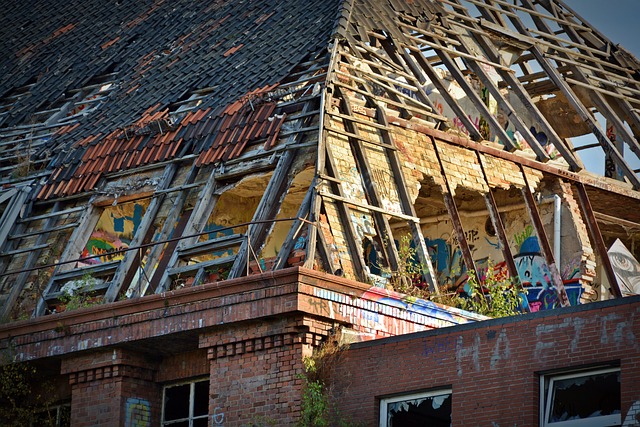Rubber roofing is a modern, versatile, and durable cost-effective roofing solution that offers superior water resistance, flexibility, and ease of installation. Its ability to expand and contract with changing temperatures ensures long-lasting protection against harsh weather conditions. With its unique composition, rubber roofing adapts to various roof shapes, complements modern architecture, and enhances energy efficiency by maintaining consistent indoor temperature. The simple installation process, coupled with affordability and durability, makes it an attractive cost-effective roofing solution for both homeowners and contractors.
“Discover the revolutionary power of rubber roofing—a flexible, durable solution transforming the way we think about roofs. This article explores how rubber roofing offers an unparalleled blend of flexibility and water resistance, making it a top choice for modern structures. From understanding the materials to its longevity, we delve into why this cost-effective roofing solution is gaining traction in today’s market. Learn how rubber roofing adapts to various designs while ensuring your investment stands the test of time.”
Understanding Rubber Roofing: Materials and Benefits
Rubber roofing, a modern and innovative approach to outdoor protection, has emerged as a popular choice among homeowners and contractors alike. This durable and flexible material offers an array of benefits, making it an attractive option for those seeking reliable and long-lasting roofing solutions. The primary component of rubber roofing is, well, rubber—a versatile and resilient substance that can be crafted into high-quality sheets or tiles. These materials are then carefully designed to withstand the harsh elements, providing an excellent barrier against water intrusion.
One of the key advantages of rubber roofing is its cost-effectiveness. Unlike traditional roofing materials, which often require extensive labor and materials, rubber roofs can be installed relatively easily, reducing overall expenses. This affordability makes it an appealing choice for those looking to renovate or install a new roof without breaking the bank. Additionally, rubber roofing’s flexibility allows it to expand and contract with changing temperatures, ensuring a secure fit and preventing potential damage caused by thermal shifts.
Advantages of Flexibility in Roofing Designs
Rubber roofing offers an array of advantages, particularly in terms of flexibility and water resistance, making it a popular choice for many modern roofing designs. One of the key benefits is its adaptability to various shapes and contours, allowing for unique architectural styles and cost-effective roofing solutions. This flexibility enables builders and designers to create dynamic rooftops that blend seamlessly with the overall aesthetic of a structure, from sleek, curved lines to intricate geometric patterns.
Moreover, rubber’s inherent elasticity provides superior water resistance, a critical factor in protecting buildings from the elements. Its stretchability ensures that it can expand and contract without breaking or cracking, even under extreme temperature changes. This property, coupled with its seamless installation capabilities, results in a robust barrier against water penetration, offering long-lasting protection for any structure.
Water Resistance: How Rubber Roofing Stands Up to the Elements
Rubber roofing has established itself as a leading choice among cost-effective roofing solutions, primarily due to its exceptional water resistance. This durable material can withstand intense rainfall, storms, and even extreme weather conditions, ensuring your home remains dry and protected. The secret lies in its unique composition; rubber is highly flexible yet solid, creating a robust barrier against moisture intrusion. Unlike traditional roofs that may crack or leak under pressure, rubber roofing expands and contracts with changing temperatures, maintaining its integrity over time.
This adaptability makes it an ideal choice for regions prone to rapid weather changes. Moreover, rubber roofing’s water-resistant properties extend beyond mere protection; they also contribute to energy efficiency. By keeping out excess moisture, it helps maintain a consistent indoor temperature, reducing the workload on cooling and heating systems. Thus, not only does rubber roofing offer superior water resistance, but it also provides long-term savings and enhanced comfort for homeowners.
Installation Process: A Cost-Effective Approach
The installation process for rubber roofing is a straightforward approach that makes it one of the most appealing cost-effective roofing solutions on the market. Unlike traditional materials, which often require complex and labor-intensive methods, rubber roofs can be easily applied as a do-it-yourself project or with minimal professional assistance. The versatility of rubber allows for flexible installation, catering to various roof shapes and sizes without compromise.
This cost-saving aspect stems from the material’s affordability, durability, and long-lasting performance. Rubber roofing is resistant to common wear and tear, extreme weather conditions, and potential leaks, reducing the need for frequent repairs or replacements. As a result, homeowners can enjoy significant savings on maintenance costs, making rubber roofing an attractive option for those seeking both functionality and affordability.
Longevity and Maintenance: Ensuring Your Investment Lasts
Rubber roofing offers an excellent balance between flexibility and water resistance, making it a popular choice for many homeowners. One of its significant advantages is longevity; with proper maintenance, rubber roofs can last for decades, outperforming many traditional roofing materials. This durability translates to cost-effective roofing solutions in the long run, as replacement costs are significantly reduced.
Regular maintenance plays a crucial role in maximizing your investment. Simple tasks like cleaning the roof to prevent debris buildup and inspecting it for any signs of damage or wear can go a long way. Most issues can be addressed promptly, ensuring your rubber roof retains its water-repellent properties and flexibility. By keeping on top of maintenance, you can avoid costly repairs or replacements and enjoy the benefits of this durable roofing system for years to come.
Rubber roofing offers an excellent balance of flexibility, durability, and water resistance, making it a popular choice for modern construction. Its adaptability allows for unique roofing designs while ensuring homes and buildings remain protected from the elements. As a cost-effective roofing solution, rubber roofing provides long-lasting performance with minimal maintenance requirements. By choosing this sustainable and efficient option, property owners can enjoy peace of mind knowing their investment is secure for years to come.
